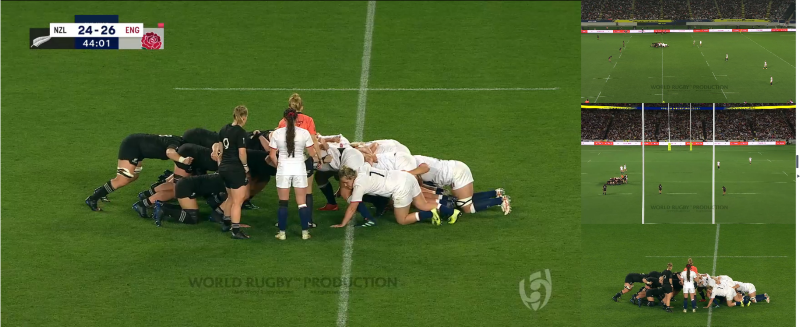Filming angles
There are four common angles analysts will use when analysing footage of a match or training. The function of each angle is described below along with a video example of each.
Broadcast / TX view
This is the most common view an analyst will require to film and view. As the name suggests the footage will be typical of what is broadcast on TV by the production company. The broadcast view will give a mix of angles and positions so is regularly used by analysts if only one view is required for review.

Wide angle view
The wide angle view is filmed from the side of the pitch as close to the halfway line as possible. The aim is to show a wide view of the play with the majority of the backline visible in the frame at the same time. Attack and defence coaches will concentrate on using the wide view when they are looking at patterns of play and spacing between players.

Tight angle view
Similar to the wide angle view, the tight angle view is filmed from the side of the pitch as close to halfway line as possible. Camera mount devices can be used to position the cameras filming the tight angle view and wide angle view on top of each other to minimise the distance between the two cameras.

The aim of the tight angle view camera is to capture action a few metres either side of the ball. This gives greater detail to rucks, mauls, scrums and lineouts.
The tight angle view will sometimes be used for individual analysis as it is easier to pick out individual player actions than on the wide angle view.
Set piece coaches will often use the tight angle view as it gives them more technical detail of the event. Defence coaches will also use it as they may want to closely analyse tackle technique or the actions of players at the breakdown.

End on (Tactical) angle view
The end on view should be filmed from directly behind the goal posts with good elevation. It should aim to capture two thirds of the pitch from touchline to touchline, with the outer frame of the view just outside the touchline. If the ball is in the middle of the pitch, the space between the 15m lines should all be in frame.
The end on view is typically used by defence and attack coaches for an additional angle of patterns and shapes of play, along with distances between players. It is an excellent supplementary angle to that of the wide angle view.

Synchronised footage
Most analysis software has the capability to synchronise all the view angles to a common point in time. This enables a match to be viewed showing all four angle views on the same screen. If synchronising view angles, analysts must make sure the footage is captured in it’s entirety i.e. the whole game including half-time for every angle, and have the same frame rate or at least have the ability to convert the raw video files to the same conversion.
